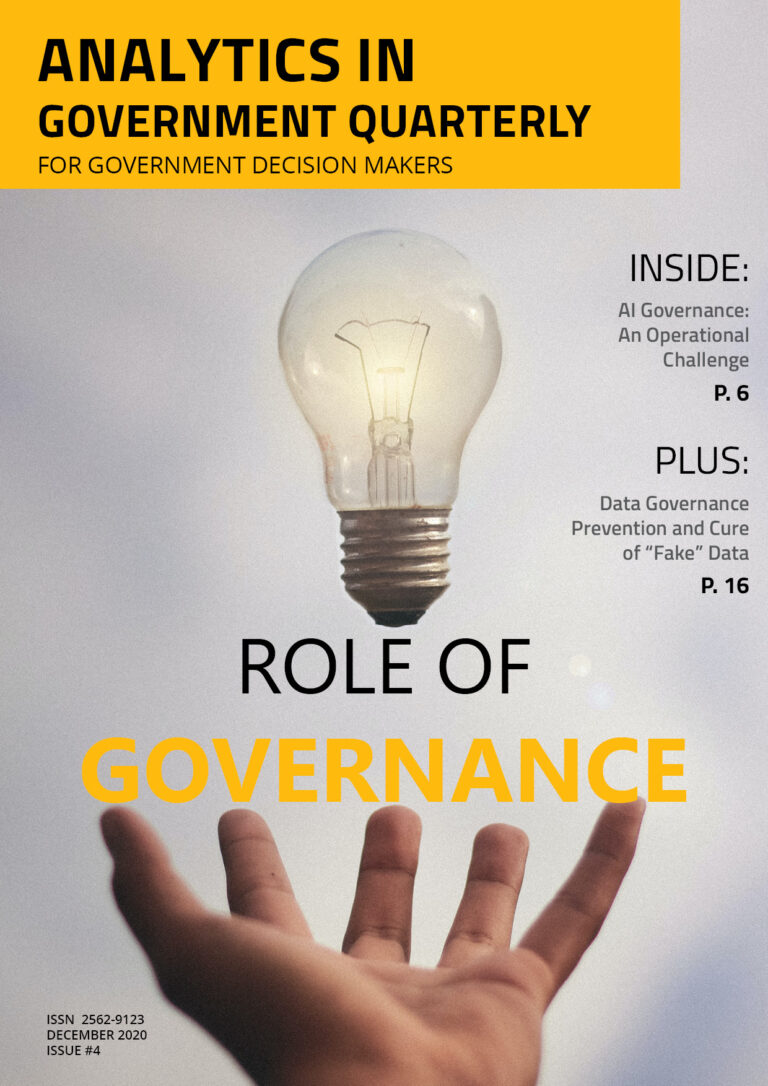DATA SCIENCE
Making the Business Case for Data Governance: Improved Public Service
Demonstrating the potential value of data governance for the organization is key to obtaining buy-in from stakeholders organization-wide and making the introduction of a data governance program a success. A recent review of data governance in the academic and industry literature summarized “critical success factors” (CSFs) for data governance.
By Kevin Kells, Ph.D.

Demonstrating the potential value of data governance for the organization is key to obtaining buy-in from stakeholders organization-wide and making the introduction of a data governance program a success. A recent review[1] of data governance in the academic and industry literature summarized “critical success factors” (CSFs) for data governance.
One group of CSFs spoke to the importance of organizing the effort well to introduce data governance:
- Establish data governance team structure;
- Define roles and responsibilities;
- Develop processes, procedure guidelines, principles, policies, and standards to support the data governance;
- Assess the data governance situation;
- Define the sustaining requirements.
- A second group of CSFs involved technology and data governance implementation:
- Monitoring tools and metrics;
- Technology;
- Accountability;
- Compliance monitoring; and
- Data governance tools.
But the largest group of CSFs centered around outreach to organizational stakeholders, organizational culture, and communication:
- Develop a business case for data governance;
- Awareness of data stakeholders;
- Develop a communication plan;
- Develop an integration process;
- Develop a change management plan;
- Training and education.
An approach to introducing data governance that embraces the need to promote buy-in and participation begins with two-way communication with organizational stakeholders to co-author a business case for data governance. Input from key stakeholders should reflect stakeholders’ positive future-picture of how a successful data governance program will help their functioning, improve their efficient use of resources, and ultimately allow them to provide a better service both internally and ultimately to the public. This input can also relate a few, practical data-quality “horror stories” to emphasize the contrast of this improved future compared with the status quo. Include a visual vignette as an example of how a department or team may use and present data to clarify complexity better and to provide improved actionable intelligence under a data governance program.
Compiled into a compelling story, this stakeholder input can be persuasive throughout the organization, avoiding resistance to governance policies when they are introduced, and inspiring confident championing of the data governance effort from the leadership suite.
The team that spearheads the planning and implementation of the data governance program should organize itself well and include the mentioned success factors. Due focus should also be placed on the technology and implementation of the data governance principles, policies, and procedures. And yet the most important consideration for organizational buy-in is to make the business case – and to have current data stakeholders help make this case – tying improved functioning, better use of resources, and ultimately improved public service to the data governance effort, in line with the organization’s goals and vision.
- Al-Ruithe, M., Benkhelifa, E., & Hameed, K. (2018). A systematic literature review of data governance and cloud data governance. Personal and Ubiquitous Computing.
About The Author

Kevin Kells. Ph.D.
Kevin has worked as an R&D Engineer in software systems in the Financial and Semiconductor industries in Switzerland, Silicon Valley, and Ottawa, and currently works with real-time data and news feed systems at a major market news and data company in New York City. He also has extensive experience in non-profit management, both in the area of human systems and IT systems. He received his PhD from the Swiss Federal Institute of Technology (ETH), Zurich in computer simulation of semiconductor devices and holds an MBA with areas of focus in entrepreneurship and business analytics from the University of Ottawa, Telfer School of Management.

